Slide Show
Spain for Digital Nomads
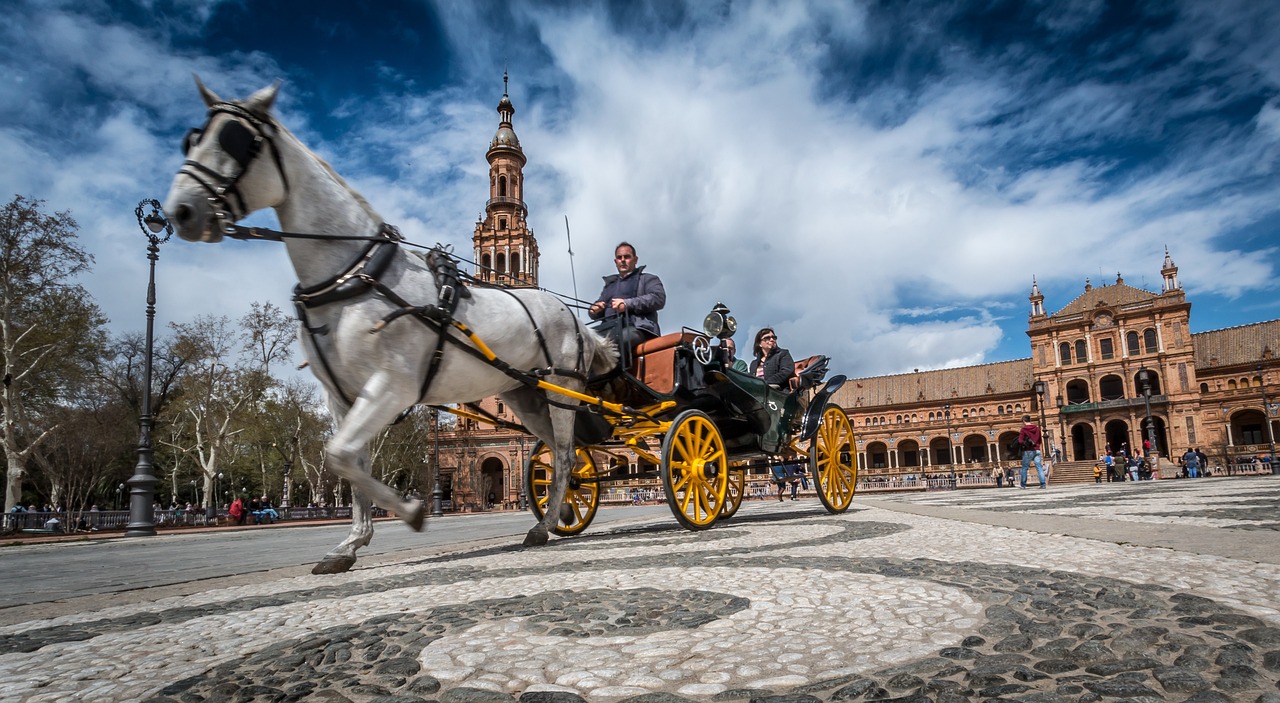
Spain is a great destination for digital nomads thanks to its excellent weather, diverse culture, delicious food, and affordable cost of living. Here are some tips for digital nomads looking to spend time in Spain:
-
Choose your location wisely: Spain has many beautiful cities, each with its own unique flavor. Barcelona and Madrid are popular choices, but smaller cities like Valencia and Malaga offer a more relaxed lifestyle.
-
Find a coworking space: There are many coworking spaces in Spain, especially in larger cities. These spaces offer fast internet, a community of like-minded individuals, and a professional environment to work in.
-
Learn some Spanish: Although many Spaniards speak English, learning some Spanish will help you better immerse yourself in the local culture and make it easier to navigate day-to-day life.
-
Embrace the local culture: Spain is known for its laid-back lifestyle and love of good food, so be sure to try the local cuisine and take advantage of the many festivals and events that take place throughout the year.
-
Stay connected: Spain has good internet connectivity in most areas, but it’s always a good idea to have a backup plan in case of any disruptions. You can also purchase a local SIM card for your phone to stay connected while on the go.
-
Plan your travel: Spain has many beautiful destinations to explore, from the beaches of the Costa del Sol to the mountains of the Pyrenees. Take advantage of your time in Spain to explore the country and experience all that it has to offer.
Spain Expat Communities
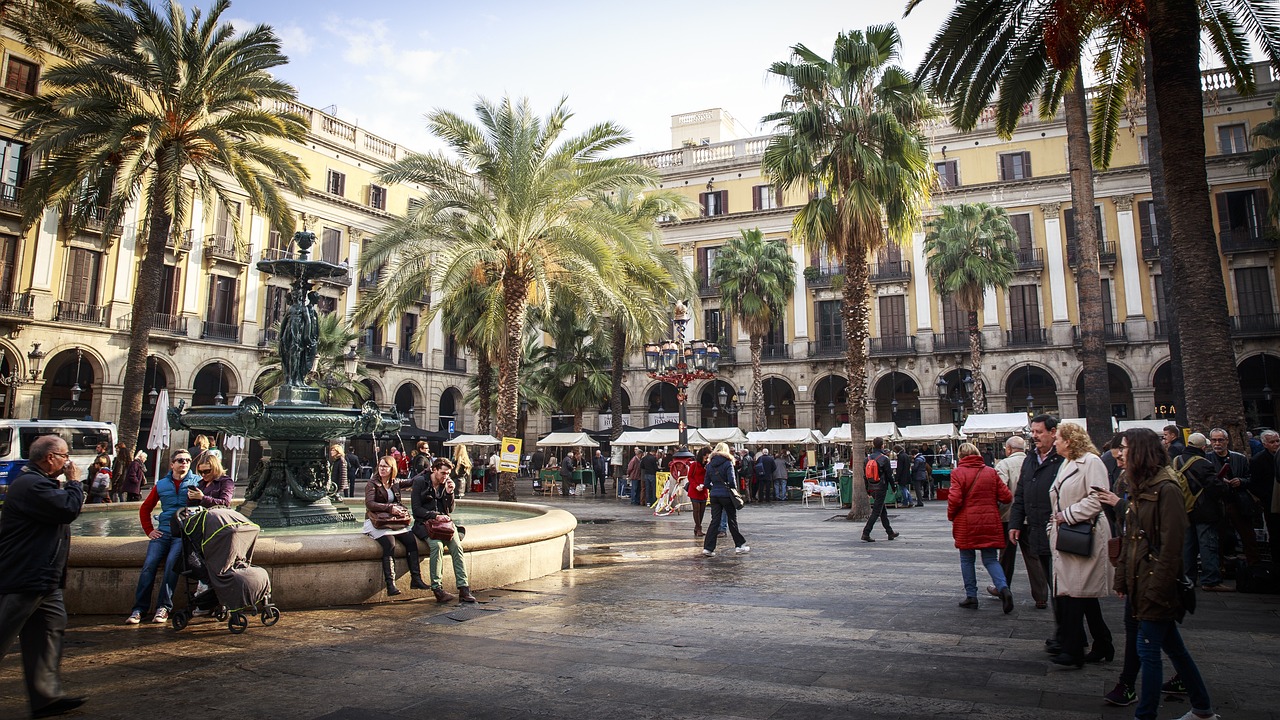
Spain is home to a large number of expat communities, especially in popular tourist areas and coastal towns. Here are some of the most popular expat communities in Spain:
-
Costa del Sol: The Costa del Sol, located in the southern region of Andalusia, is one of the most popular expat destinations in Spain. It has a large community of British, German, and Scandinavian expats, and offers a warm climate, stunning beaches, and a low cost of living.
-
Costa Blanca: The Costa Blanca, located in the eastern region of Valencia, is another popular expat destination. It has a large British expat community, as well as many German and Dutch expats, and offers a warm climate, beautiful beaches, and a relaxed lifestyle.
-
Barcelona: Barcelona is a popular destination for both tourists and expats. It has a diverse expat community, with many Americans, British, and Australians, and offers a vibrant culture, excellent food, and a bustling nightlife.
-
Madrid: Madrid is the capital of Spain and has a large expat community, including many Americans and British. It offers a vibrant culture, excellent food, and a central location for exploring the rest of Spain.
-
Valencia: Valencia is a popular destination for expats, especially those from northern Europe. It offers a mild climate, excellent food, and a low cost of living.
-
Andalusia: Andalusia is a region in southern Spain that is popular with expats from all over the world. It offers a warm climate, stunning scenery, and a relaxed lifestyle.
-
Mallorca: Mallorca is a popular destination for expats, especially those from Germany and the UK. It offers a warm climate, beautiful beaches, and a laid-back lifestyle.
Living As An Expat In Spain
Living as an expat in Spain can be a wonderful experience. Here are some things to keep in mind:
-
Residency and visas: As an expat, you will need to obtain a residency permit to live and work in Spain legally. Depending on your country of origin, you may also need to obtain a visa.
-
Language: Spanish is the official language of Spain, and while many Spaniards speak English, it’s a good idea to learn some Spanish to better integrate into the local culture and communicate with locals.
-
Cost of living: The cost of living in Spain is generally lower than in other European countries, especially in smaller towns and cities. However, prices in larger cities like Madrid and Barcelona can be higher.
-
Healthcare: Spain has a public healthcare system that is generally of a high standard. Expats can also opt for private healthcare insurance.
-
Culture shock: Moving to a new country can be a big adjustment, and it’s normal to experience culture shock. Be prepared to adapt to a new way of life and take the time to explore and learn about the local culture.
-
Social life: Spain is a social country, and making friends and getting involved in social activities can be a great way to meet new people and integrate into the local community.
-
Climate: Spain has a Mediterranean climate, with mild winters and hot summers. Be prepared for high temperatures in the summer and cooler temperatures in the winter.
Spain Facts
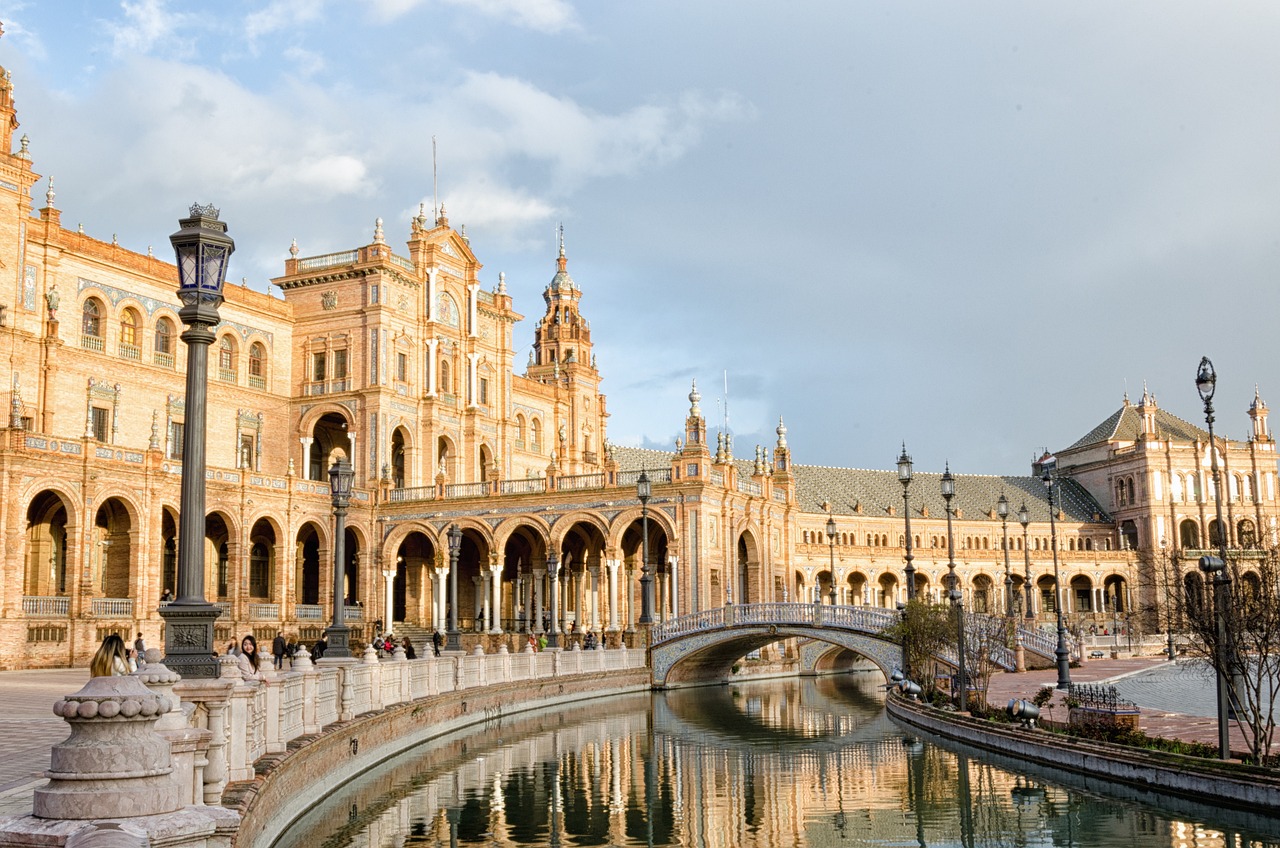
Here are some interesting facts about Spain:
-
Spain is the second-largest country in the European Union after France, covering an area of 505,990 square kilometers.
-
Madrid is the capital and largest city in Spain, with a population of over 3 million people.
-
The official language of Spain is Spanish, which is spoken by over 99% of the population.
-
Spain is known for its delicious food, including paella, tapas, and churros.
-
Bullfighting is a traditional sport in Spain, although it has become controversial in recent years.
-
Spain is home to many famous artists, including Pablo Picasso, Salvador Dali, and Diego Velazquez.
-
Spain has a rich history, with many ancient landmarks and monuments, including the Alhambra in Granada and the Sagrada Familia in Barcelona.
-
Spain is the world’s second-largest producer of wine, after Italy.
-
The currency used in Spain is the Euro.
-
Spain has a high-speed train network, known as the AVE, which connects many cities across the country.
-
Spain has a popular tourism industry, with over 82 million visitors in 2019.
-
The most popular sport in Spain is soccer, and the country has produced many famous players, including Lionel Messi and Cristiano Ronaldo.
Spain Official Language
The official language of Spain is Spanish, also known as Castilian. Spanish is a Romance language that originated in the Castile region of Spain and is spoken by over 99% of the population. Spanish is the second most spoken language in the world after Mandarin Chinese, with over 460 million speakers worldwide.
In addition to Spanish, there are several regional languages spoken in Spain, including Catalan, Basque, and Galician. These languages are co-official in their respective regions and are protected under the Spanish Constitution. In Catalonia, for example, both Spanish and Catalan are considered official languages, and most official documents and signs are printed in both languages.
English is also widely spoken in Spain, especially in tourist areas and among younger generations. However, it’s always a good idea to learn some Spanish to better integrate into the local culture and communicate with locals.
Spain Visas for Digital Nomads
Spain does not have a specific visa for digital nomads, but there are several visa options that may be suitable for those looking to work remotely while living in Spain:
-
Non-Lucrative Visa: This visa allows individuals to live in Spain without engaging in any employment or business activities. It is a good option for digital nomads who work remotely and can support themselves financially.
-
Self-Employment Visa: This visa is designed for individuals who want to start their own business or work as freelancers in Spain. It requires proof of a viable business plan and sufficient financial resources to support oneself.
-
Work Visa: If you are employed by a Spanish company or have a job offer in Spain, you may be eligible for a work visa.
-
Student Visa: If you are enrolled in a Spanish educational institution, you may be eligible for a student visa, which allows you to work part-time while studying.
Fun Things to do in Spain

Spain is a diverse and exciting country with many fun things to do. Here are some suggestions:
-
Visit the beaches: Spain is home to many beautiful beaches, such as the Costa del Sol, Costa Brava, and the Balearic Islands. Spend a day lounging in the sun, swimming in the sea, and enjoying a refreshing drink.
-
Explore the cities: Spain has many historic and vibrant cities, such as Madrid, Barcelona, and Seville. Take a walking tour to see the sights, try local foods, and experience the culture.
-
Attend a festival: Spain is known for its lively festivals, such as La Tomatina, San Fermin, and La Feria de Abril. Participate in the fun by throwing tomatoes, running with the bulls, or dancing the night away.
-
Visit the museums: Spain is home to many world-class museums, such as the Prado Museum in Madrid, the Guggenheim Museum in Bilbao, and the Picasso Museum in Barcelona.
-
Sample the cuisine: Spain is known for its delicious food, such as paella, tapas, and churros. Try some local specialties and enjoy a glass of wine or sangria.
-
See the architecture: Spain has many beautiful buildings and monuments, such as the Alhambra in Granada, the Sagrada Familia in Barcelona, and the Royal Palace in Madrid.
-
Attend a soccer game: Soccer is a national obsession in Spain, and attending a game is a must-do experience for sports fans.
-
Take a hike: Spain has many stunning natural landscapes, such as the Pyrenees Mountains and the Camino de Santiago. Go for a hike to see the sights and enjoy the fresh air.
Popular Spain Tourist Attractions
Spain is a popular tourist destination with many attractions. Here are some of the most popular tourist attractions in Spain:
-
La Sagrada Familia: This stunning basilica in Barcelona is one of the most iconic landmarks in Spain, with its intricate towers and stained glass windows.
-
Park Guell: Another popular attraction in Barcelona, Park Guell is a public park filled with vibrant mosaic tiles and sculptures designed by the famous artist Antoni Gaudi.
-
The Alhambra: This Moorish palace and fortress complex in Granada is a UNESCO World Heritage Site and one of the most popular tourist destinations in Spain.
-
The Prado Museum: This museum in Madrid is home to a vast collection of art, including works by Spanish masters such as Velazquez, Goya, and El Greco.
-
The Royal Palace of Madrid: This grand palace in Madrid is the official residence of the Spanish royal family and is open to visitors.
-
The Cathedral of Santiago de Compostela: This Romanesque cathedral in the Galicia region is the final destination of the famous Camino de Santiago pilgrimage route.
-
The beaches of the Costa del Sol: The southern coast of Spain is home to many beautiful beaches, such as Marbella, Malaga, and Torremolinos.
-
The Plaza Mayor: This bustling public square in Madrid is lined with shops, restaurants, and cafes, and is a popular spot for locals and tourists alike.
-
La Rambla: This famous street in Barcelona is lined with shops, street performers, and outdoor cafes, and is a great place to experience the vibrant culture of the city.
-
The Guggenheim Museum: This modern art museum in Bilbao is famous for its stunning architecture, designed by architect Frank Gehry.
Popular Spain Tours
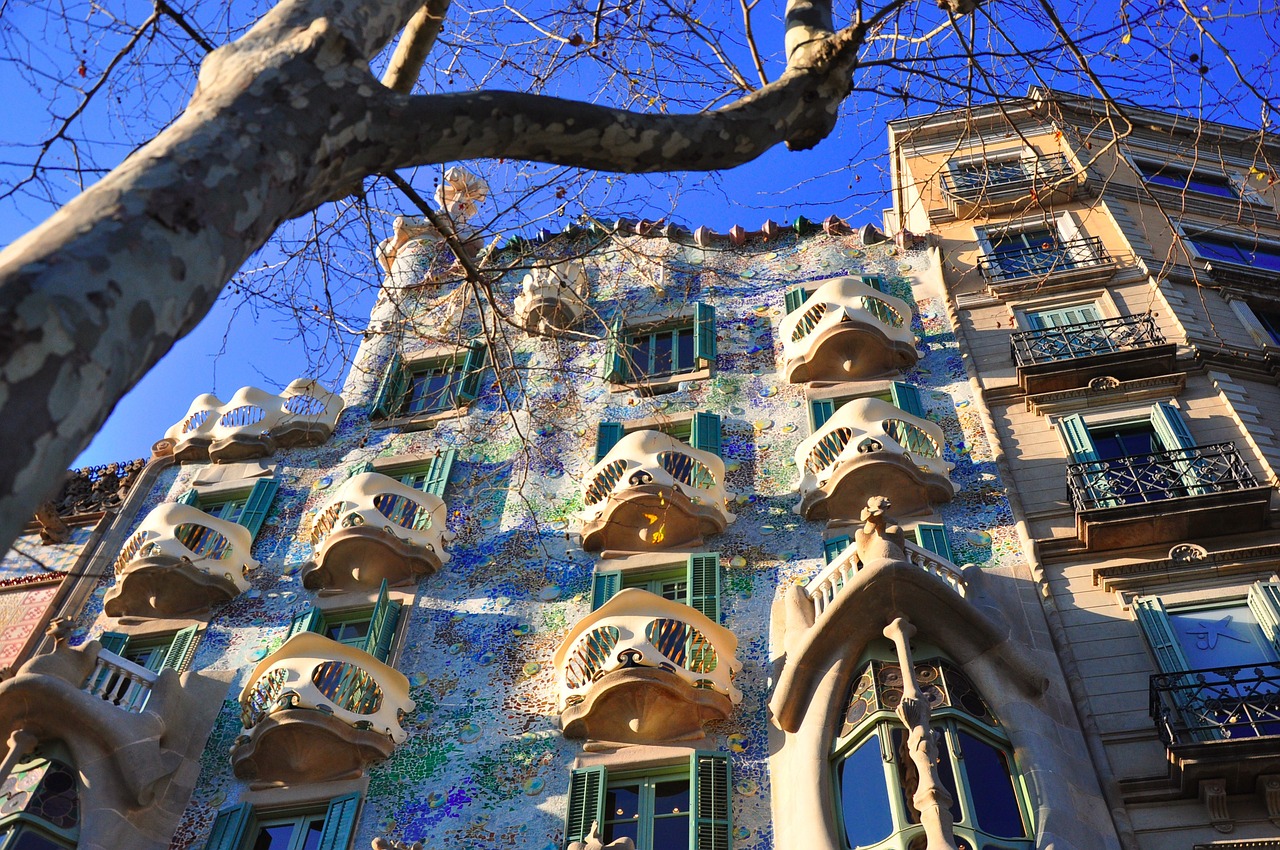
Spain is a popular destination for tours, with many options available to suit different interests and budgets. Here are some of the most popular tours in Spain:
-
City Tours: City tours are a great way to explore the major cities of Spain, such as Madrid, Barcelona, Seville, and Valencia. These tours often include visits to famous landmarks, museums, and other attractions, as well as guided walks through the historic neighborhoods of each city.
-
Wine Tours: Spain is one of the world’s largest wine-producing countries, and wine tours are a popular way to explore the country’s many vineyards and wineries. Tours often include wine tastings, cellar visits, and the chance to meet local winemakers.
-
Camino de Santiago Tours: The Camino de Santiago is a famous pilgrimage route that leads to the Cathedral of Santiago de Compostela in Galicia. Tours can range from a few days to several weeks, depending on the distance and pace of the hike.
-
Food Tours: Spanish cuisine is world-renowned, and food tours are a great way to sample the local specialties and experience the culture of each region. Tours often include visits to local markets, food tastings, and cooking classes.
-
Flamenco Tours: Flamenco is a traditional Spanish dance that originated in Andalusia. Flamenco tours often include visits to flamenco shows, dance classes, and tours of the historic neighborhoods where flamenco originated.
-
Multi-Day Tours: Multi-day tours are a great way to explore Spain’s many regions and attractions. These tours can range from budget-friendly backpacker tours to luxury tours with private transportation and five-star accommodations.
Popular Spain Golf Courses
Spain is a popular destination for golfers, with many world-class golf courses located throughout the country. Here are some of the most popular golf courses in Spain:
-
Valderrama Golf Club: Located in Sotogrande, Andalusia, Valderrama is one of the most famous golf courses in Europe. It has hosted the Ryder Cup and many other major golf tournaments.
-
Real Club de Golf El Prat: This golf course is located just outside of Barcelona and is considered one of the best in Spain. It has hosted the Spanish Open and many other tournaments.
-
La Manga Club: This resort in Murcia has three championship golf courses and is one of the most popular golf destinations in Spain. It has hosted many professional tournaments and is known for its excellent facilities.
-
PGA Catalunya Resort: This resort is located in Girona, Catalonia, and has two championship golf courses. It has hosted many professional tournaments and is considered one of the best golf resorts in Europe.
-
Finca Cortesin Golf Club: Located in Casares, Andalusia, Finca Cortesin is a luxury golf resort with a championship course that has hosted the Volvo World Match Play Championship.
-
Real Club de Golf de Sevilla: This golf course is located in Seville and is considered one of the best in Spain. It has hosted many professional tournaments and is known for its challenging layout.
-
Costa Brava Golf Club: This golf course is located in Girona, Catalonia, and is known for its beautiful setting and excellent facilities. It has hosted many amateur and professional tournaments.
Spain Population
As of my knowledge cutoff in September 2021, the population of Spain was estimated to be around 46.8 million people, making it the sixth most populous country in the European Union. The population is concentrated mainly in the urban areas, with over 80% of the population living in cities and towns. The largest cities in Spain are Madrid, Barcelona, Valencia, and Seville. The population of Spain is diverse, with many people of different ethnic and cultural backgrounds. The official language is Spanish, although there are also several regional languages spoken throughout the country.
Spain Cities
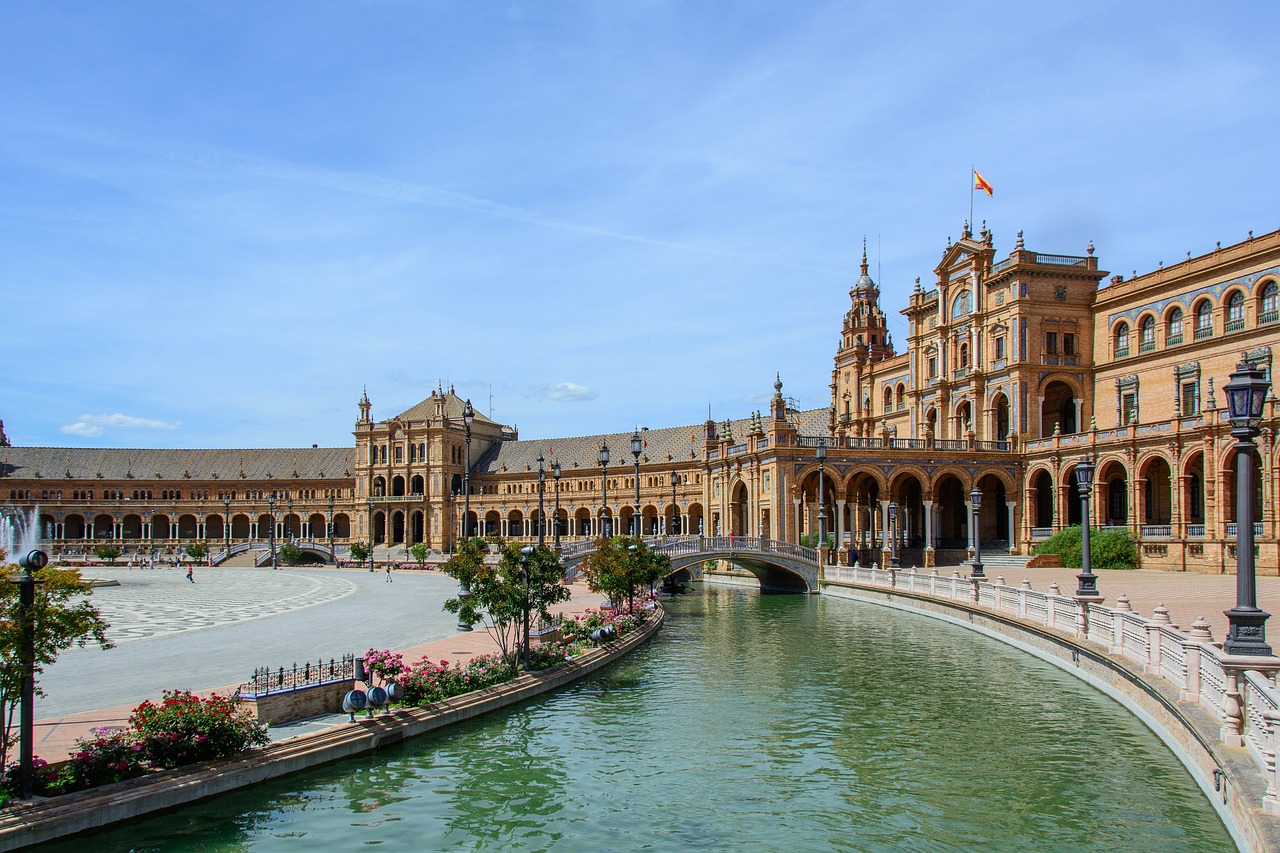
Spain is home to many beautiful and vibrant cities, each with its own unique character and attractions. Here are some of the most popular cities in Spain:
-
Madrid: The capital of Spain and the largest city in the country, Madrid is known for its beautiful architecture, world-class museums, and lively nightlife.
-
Barcelona: The second-largest city in Spain, Barcelona is famous for its stunning architecture, beautiful beaches, and vibrant culture.
-
Seville: Located in the southern region of Andalusia, Seville is known for its beautiful historic center, delicious food, and lively festivals.
-
Valencia: Located on the eastern coast of Spain, Valencia is known for its beautiful beaches, futuristic architecture, and delicious cuisine.
-
Bilbao: Located in the Basque Country, Bilbao is known for its stunning Guggenheim Museum, beautiful historic center, and delicious Basque cuisine.
-
Granada: Located in Andalusia, Granada is famous for its stunning Alhambra palace, beautiful historic center, and delicious food.
-
Malaga: Located on the southern coast of Spain, Malaga is known for its beautiful beaches, lively nightlife, and delicious seafood.
Madrid for Digital Nomads
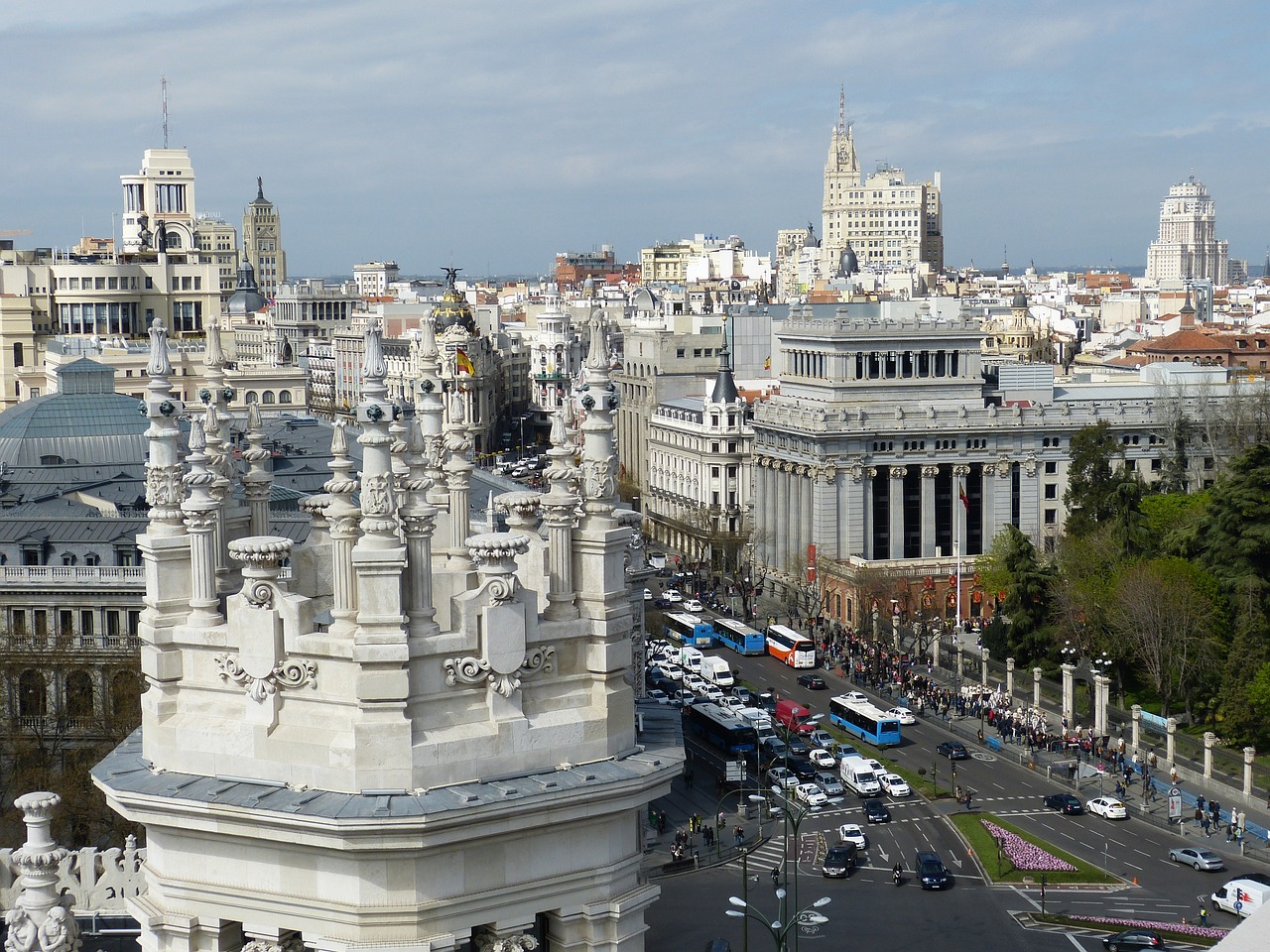
Madrid is a great city for digital nomads, with its excellent transportation system, affordable cost of living, and vibrant culture. Here are some reasons why Madrid is a great destination for digital nomads:
-
Coworking spaces: Madrid is home to many coworking spaces, such as Impact Hub Madrid, which offer affordable workspaces, networking opportunities, and other amenities for digital nomads.
-
Cafes and restaurants: Madrid has a great cafe culture, with many cafes and restaurants offering free Wi-Fi, comfortable seating, and delicious food and drink.
-
Transportation: Madrid has an excellent public transportation system, including a metro, buses, and trains, making it easy for digital nomads to get around the city.
-
Culture and entertainment: Madrid is known for its world-class museums, such as the Prado Museum and the Reina Sofia Museum, as well as its lively nightlife and music scene.
-
Affordable cost of living: Madrid has a lower cost of living than many other European cities, making it an affordable destination for digital nomads looking to save money while enjoying a high quality of life.
-
Location: Madrid is centrally located in Spain, making it easy to travel to other destinations in Spain and Europe.
Madrid Coworking Spaces
Madrid is home to many coworking spaces, each with its own unique character and amenities. Here are some of the most popular coworking spaces in Madrid:
-
Impact Hub Madrid: Impact Hub Madrid is a coworking space located in the city center that offers a variety of workspaces, including private offices, dedicated desks, and flexible coworking areas. It also offers networking events, workshops, and other resources for entrepreneurs and digital nomads.
-
La Nave: La Nave is a coworking space located in the Villaverde neighborhood of Madrid. It has a large open space with plenty of natural light, as well as private offices and meeting rooms. It’s also known for its vibrant community of entrepreneurs and startups.
-
Utopicus: Utopicus is a chain of coworking spaces with several locations in Madrid. It offers a variety of workspaces, including private offices, dedicated desks, and shared coworking areas, as well as meeting rooms and event spaces.
-
Talent Garden Madrid: Talent Garden Madrid is a coworking space located in the city center that offers a variety of workspaces, as well as networking events, workshops, and other resources for entrepreneurs and digital nomads. It also has a focus on innovation and technology, with many of its members working in the tech industry.
-
Spaces Madrid: Spaces Madrid is a chain of coworking spaces with several locations in the city. It offers a variety of workspaces, including private offices, dedicated desks, and shared coworking areas, as well as meeting rooms and event spaces. It’s also known for its stylish and modern design.
Barcelona for Digital Nomads
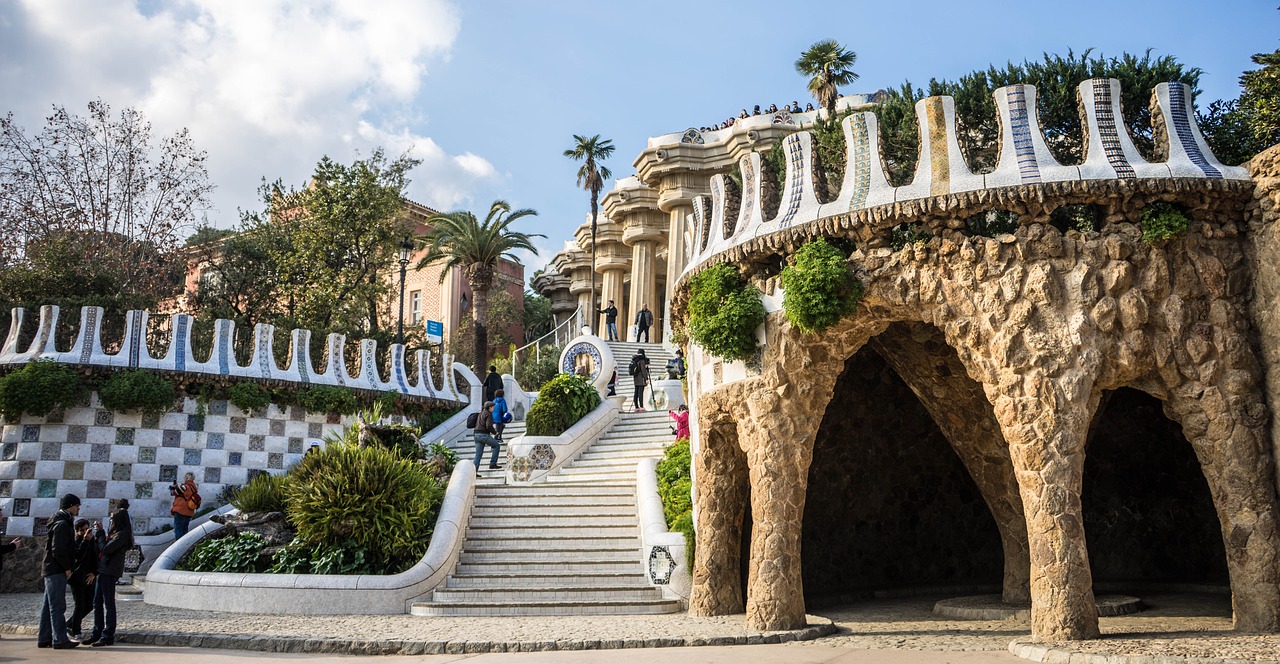
Barcelona is a great destination for digital nomads, with its beautiful beaches, lively culture, and excellent amenities for remote workers. Here are some reasons why Barcelona is a great city for digital nomads:
-
Coworking spaces: Barcelona is home to many coworking spaces, such as Betahaus and MOB, which offer affordable workspaces, networking opportunities, and other amenities for digital nomads.
-
Cafes and restaurants: Barcelona has a vibrant cafe culture, with many cafes and restaurants offering free Wi-Fi, comfortable seating, and delicious food and drink.
-
Transportation: Barcelona has an excellent public transportation system, including a metro, buses, and trains, making it easy for digital nomads to get around the city.
-
Culture and entertainment: Barcelona is known for its stunning architecture, world-class museums, such as the Picasso Museum and the Joan Miro Foundation, as well as its lively nightlife and music scene.
-
Affordable cost of living: Barcelona has a lower cost of living than many other European cities, making it an affordable destination for digital nomads looking to save money while enjoying a high quality of life.
-
Location: Barcelona is located on the coast of the Mediterranean Sea, offering easy access to beautiful beaches and outdoor activities, as well as a gateway to other destinations in Spain and Europe.
Seville for Digital Nomads
Seville is a great destination for digital nomads, with its beautiful historic center, delicious food, and lively festivals. Here are some reasons why Seville is a great city for digital nomads:
-
Coworking spaces: Seville is home to many coworking spaces, such as La Selva, which offer affordable workspaces, networking opportunities, and other amenities for digital nomads.
-
Cafes and restaurants: Seville has a vibrant food culture, with many cafes and restaurants offering free Wi-Fi, comfortable seating, and delicious food and drink.
-
Transportation: Seville has an excellent public transportation system, including a metro, buses, and trains, making it easy for digital nomads to get around the city.
-
Culture and entertainment: Seville is known for its beautiful historic center, with attractions such as the Alcazar Palace and the Cathedral of Seville. It’s also known for its lively festivals, such as the Feria de Abril and the Semana Santa.
-
Affordable cost of living: Seville has a lower cost of living than many other European cities, making it an affordable destination for digital nomads looking to save money while enjoying a high quality of life.
-
Location: Seville is located in the southern region of Andalusia, offering easy access to other destinations in Spain and Portugal, as well as beautiful beaches and outdoor activities.
Spain Internet
Spain has a well-developed internet infrastructure, with a high-speed broadband network and extensive mobile coverage throughout the country. Here are some key facts about internet in Spain:
-
Broadband: Spain has a high-speed broadband network that covers most of the country, with download speeds of up to 1 Gbps available in some areas. The major providers of broadband services in Spain are Movistar, Vodafone, and Orange.
-
Mobile coverage: Spain has extensive mobile coverage, with 4G and 5G networks available in most urban areas. The major mobile operators in Spain are Movistar, Vodafone, Orange, and Yoigo.
-
Wi-Fi: Wi-Fi is widely available in Spain, with many cafes, restaurants, and public places offering free Wi-Fi access. Many hotels and other accommodations also offer Wi-Fi to guests.
-
Internet cafes: Internet cafes are still available in Spain, although they are becoming less common as more people have their own devices and access to Wi-Fi.
-
Internet censorship: Spain does not impose any significant restrictions on internet access or content, and there is no government censorship of the internet.
Spain Cost of Living
The cost of living in Spain can vary depending on the city, region, and lifestyle of the individual. However, overall, Spain is considered to have a lower cost of living compared to many other Western European countries. Here are some key factors that contribute to the cost of living in Spain:
-
Accommodation: The cost of accommodation in Spain can vary depending on the city and the type of housing. Renting an apartment or a room in a shared apartment can be affordable, particularly outside of the major cities. However, renting a large apartment or a house in a prime location can be expensive.
-
Food: The cost of food in Spain is generally affordable, particularly if you shop at local markets and cook at home. Eating out at restaurants and cafes can also be affordable, particularly in more casual places.
-
Transportation: Public transportation in Spain is generally affordable, particularly in cities where you can use the metro, buses, and trains to get around. However, owning a car can be expensive due to the cost of fuel, insurance, and maintenance.
-
Utilities: The cost of utilities, such as electricity, gas, and water, can vary depending on the region and the size of the accommodation.
-
Entertainment: The cost of entertainment in Spain can vary depending on the activity. Visiting museums and historic sites is generally affordable, and many cultural events are often free. However, going to nightclubs and high-end restaurants can be expensive.
Spain Airports
Spain has many airports throughout the country, with several international airports that serve major cities and popular tourist destinations. Here are some of the main airports in Spain:
-
Madrid-Barajas Airport (MAD): Madrid-Barajas is the largest airport in Spain and the main international airport serving the capital city of Madrid. It offers flights to destinations throughout Europe, as well as to the Americas, Africa, and Asia.
-
Barcelona-El Prat Airport (BCN): Barcelona-El Prat is the second largest airport in Spain and the main international airport serving the city of Barcelona. It offers flights to destinations throughout Europe, as well as to the Americas, Africa, and the Middle East.
-
Málaga-Costa del Sol Airport (AGP): Málaga-Costa del Sol is the fourth largest airport in Spain and serves the southern coast of Spain, including popular tourist destinations such as the Costa del Sol, Marbella, and Gibraltar.
-
Alicante-Elche Airport (ALC): Alicante-Elche is located on the eastern coast of Spain and serves the city of Alicante and the surrounding areas. It’s a popular airport for tourists visiting the Costa Blanca region.
-
Valencia Airport (VLC): Valencia Airport serves the city of Valencia and the surrounding areas. It offers flights to destinations throughout Europe and North Africa.
Spain Accommodation
Spain offers a wide range of accommodation options, from budget hostels to luxury hotels and private apartments. Here are some popular types of accommodation in Spain:
-
Hotels: Spain has a variety of hotels, ranging from budget options to luxury accommodations. Many of the major international hotel chains have a presence in Spain, particularly in the major cities and tourist destinations.
-
Hostels: Hostels are a popular option for budget-conscious travelers, particularly those who are backpacking or traveling solo. Many hostels offer dormitory-style rooms, as well as private rooms at a higher price.
-
Apartments: Renting an apartment can be a great option for travelers who are staying in Spain for an extended period of time or who prefer the flexibility and privacy of having their own space. There are many options available for renting apartments in Spain, from fully-furnished apartments to long-term rentals.
-
Guesthouses: Guesthouses are a popular option for travelers who want a more personal and authentic experience. Many guesthouses are run by local families, and offer a comfortable and welcoming atmosphere.
-
Rural accommodations: Spain is known for its beautiful countryside and rural areas, and there are many options available for travelers who want to stay in a rural setting, such as country cottages, farmhouses, and guesthouses.
Popular Spain Hotels
Spain offers a wide range of hotels to suit all budgets and travel styles, from boutique hotels to luxury resorts. Here are some of the most popular hotels in Spain:
-
Hotel Arts Barcelona: Located in the heart of Barcelona, Hotel Arts is a luxurious hotel with stunning views of the Mediterranean Sea. It offers spacious rooms and suites, as well as a spa, fitness center, and several restaurants and bars.
-
The Ritz-Carlton, Abama: The Ritz-Carlton, Abama is a luxury resort located on the island of Tenerife in the Canary Islands. It offers beautiful ocean views, a golf course, a spa, and several restaurants and bars.
-
Gran Hotel Bahia del Duque: Gran Hotel Bahia del Duque is a luxurious hotel located on the island of Tenerife. It offers beautiful ocean views, a spa, several swimming pools, and several restaurants and bars.
-
Hotel Maria Cristina, a Luxury Collection Hotel: Hotel Maria Cristina is a luxurious hotel located in San Sebastian, known for its beautiful beaches and delicious food. It offers spacious rooms and suites, a fitness center, and several restaurants and bars.
-
Hotel Alfonso XIII, a Luxury Collection Hotel: Hotel Alfonso XIII is a luxurious hotel located in Seville, known for its beautiful historic center and lively festivals. It offers spacious rooms and suites, a spa, and several restaurants and bars.
Popular Spain Vacation Rentals
Spain offers a wide range of vacation rental options, from apartments and villas to cottages and farmhouses. Here are some popular vacation rental options in Spain:
-
Airbnb: Airbnb is a popular vacation rental platform that offers a variety of accommodation options in Spain, including apartments, villas, and unique properties such as yurts and treehouses.
-
HomeAway: HomeAway is another popular vacation rental platform that offers a variety of accommodation options in Spain, including apartments, villas, and cottages.
-
Spain-Holiday.com: Spain-Holiday.com is a vacation rental platform that specializes in properties located in Spain. It offers a wide range of accommodation options, including apartments, villas, and rural accommodations such as cottages and farmhouses.
-
Wimdu: Wimdu is a vacation rental platform that offers a variety of accommodation options in Spain, including apartments, villas, and unique properties such as boats and igloos.
-
Booking.com: Booking.com is a popular booking platform that offers a variety of accommodation options in Spain, including vacation rentals such as apartments and villas.
Popular Spain Apartment Rentals
Spain offers a wide variety of apartment rentals to suit different budgets and travel preferences. Here are some popular options for apartment rentals in Spain:
-
Airbnb: Airbnb is a popular platform for renting apartments in Spain. You can find apartments of all sizes, from studios to multi-bedroom apartments, in different parts of the country. Airbnb also offers a wide range of price points to suit different budgets.
-
Idealista: Idealista is a popular Spanish platform for apartment rentals. It offers a large selection of apartments in different cities and regions of Spain. The platform is available in both English and Spanish, making it easy for non-Spanish speakers to use.
-
Spotahome: Spotahome is a platform that offers long-term apartment rentals in Spain. The platform allows you to book apartments online without having to visit them in person. Spotahome also provides detailed descriptions and photos of the apartments to help you make an informed decision.
-
Fotocasa: Fotocasa is a Spanish platform for renting apartments, houses, and other types of properties. It has a large selection of apartments available in different parts of Spain, including both urban and rural areas.
-
Apartur: Apartur is an association of apartment rental companies in Spain. They offer a wide variety of apartments in different parts of the country, and their website includes detailed information about each property.
Spain Food
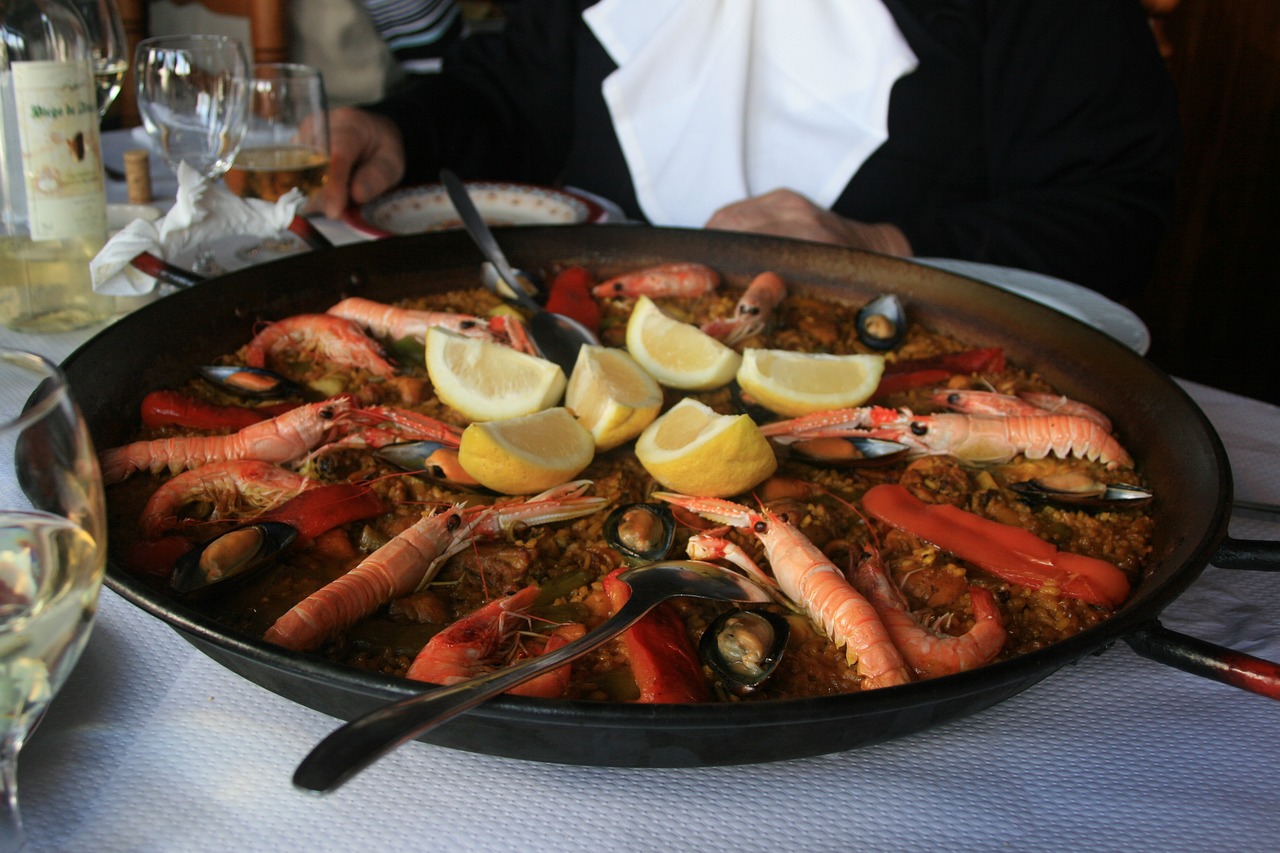
Spain is known for its delicious and varied cuisine, which is influenced by its history and geography. Here are some popular Spanish dishes:
-
Paella: Paella is a traditional Spanish dish made with rice, saffron, and a variety of meats and vegetables, such as chicken, rabbit, seafood, and peppers.
-
Tapas: Tapas are small dishes that are typically served as appetizers or snacks. They can include a wide variety of foods, such as olives, cheese, ham, croquettes, and fried seafood.
-
Tortilla española: Tortilla española is a popular dish made with potatoes, onions, and eggs. It’s similar to a frittata or omelette and is often served as a main dish or as a snack.
-
Gazpacho: Gazpacho is a cold soup made with tomatoes, cucumbers, peppers, onions, and garlic. It’s a refreshing and healthy dish that’s perfect for hot summer days.
-
Churros con chocolate: Churros con chocolate is a popular dessert in Spain. Churros are long, thin, deep-fried doughnuts, which are often dipped in thick, rich chocolate sauce.
-
Jamón ibérico: Jamón ibérico is a type of cured ham that’s made from the Iberian pig. It’s a delicacy in Spain and is often served as an appetizer or as part of a charcuterie board.
Popular Spain Restaurants
Spain is known for its delicious cuisine, and there are many great restaurants throughout the country that offer a wide range of dishes to suit different tastes and budgets. Here are some popular Spain restaurants:
-
Tickets, Barcelona: Tickets is a popular restaurant in Barcelona that offers modern and creative cuisine inspired by Spanish and Catalan flavors. It’s run by renowned chef Albert Adrià and offers a unique dining experience.
-
El Celler de Can Roca, Girona: El Celler de Can Roca is a three-Michelin-starred restaurant located in Girona, near Barcelona. It offers a creative and innovative menu that incorporates traditional Catalan and Spanish flavors.
-
Arzak, San Sebastian: Arzak is a three-Michelin-starred restaurant located in San Sebastian, a city known for its excellent food. It offers a menu that combines traditional Basque flavors with modern culinary techniques.
-
Casa Gerardo, Asturias: Casa Gerardo is a restaurant located in Asturias that specializes in traditional Asturian cuisine. It’s a family-run restaurant that has been in business for over 130 years and offers a warm and welcoming atmosphere.
-
El Pescador, Madrid: El Pescador is a popular seafood restaurant located in Madrid. It offers a variety of fresh seafood dishes, as well as traditional Spanish cuisine such as paella and tapas.
Spain Grocery Stores
Spain has a wide variety of grocery stores to choose from, ranging from small neighborhood markets to large supermarket chains. Here are some popular grocery store options in Spain:
-
Mercadona: Mercadona is a popular Spanish supermarket chain with over 1,600 stores throughout the country. It offers a wide variety of products, including fresh produce, meats, seafood, bakery items, and household goods.
-
Carrefour: Carrefour is a French multinational retail company that operates several hypermarkets and supermarkets throughout Spain. It offers a wide range of products, including groceries, household items, electronics, and clothing.
-
El Corte Inglés: El Corte Inglés is a Spanish department store chain that also offers a large supermarket section. It’s known for its high-quality products and offers a wide variety of food and household items.
-
Dia: Dia is a Spanish discount supermarket chain that offers a wide range of products at affordable prices. It has over 6,500 stores worldwide and is particularly popular among budget-conscious shoppers.
-
Lidl: Lidl is a German discount supermarket chain that has several stores throughout Spain. It offers a wide range of products, including groceries, household items, and clothing, at affordable prices.
Spain Climate
Spain has a varied climate due to its diverse geography, with a combination of Mediterranean, oceanic, and continental climates. Generally, the southern and eastern parts of Spain have a Mediterranean climate with hot, dry summers and mild, wet winters. The northern and western regions of Spain have an oceanic climate with mild temperatures and relatively high levels of precipitation. The central plateau of Spain has a continental climate with hot summers and cold winters.
Here are some average temperature ranges for different regions of Spain:
-
Andalusia (southern Spain): In summer, temperatures can reach up to 40°C (104°F) during the day, while winter temperatures range from 8°C to 18°C (46°F to 64°F).
-
Catalonia (northeastern Spain): In summer, temperatures range from 24°C to 28°C (75°F to 82°F), while winter temperatures range from 6°C to 14°C (43°F to 57°F).
-
Madrid (central Spain): In summer, temperatures can reach up to 36°C (97°F) during the day, while winter temperatures range from 0°C to 10°C (32°F to 50°F).
-
Basque Country (northern Spain): In summer, temperatures range from 20°C to 23°C (68°F to 73°F), while winter temperatures range from 7°C to 13°C (45°F to 55°F).
Spain Transportation

Spain has a well-developed transportation system that makes it easy to travel within the country and beyond. Here are some popular transportation options in Spain:
-
Trains: Spain has an extensive train network that connects major cities and regions throughout the country. The national train operator is Renfe, which offers high-speed AVE trains as well as regional trains. Train travel is generally reliable, fast, and affordable.
-
Buses: Buses are a popular transportation option in Spain, particularly for traveling to smaller towns and villages. There are several bus companies that operate throughout the country, including Alsa, Avanza, and Socibus.
-
Metro: Madrid and Barcelona both have metro systems that offer a fast and convenient way to travel around the cities. The Madrid Metro is the second-largest metro system in Europe, while the Barcelona Metro is the fifth-largest.
-
Taxis: Taxis are widely available in Spain and can be hailed on the street or booked in advance. They are generally safe and reliable, but prices can vary depending on the city and time of day.
-
Car rental: Renting a car is a popular option for travelers who want to explore the countryside or visit smaller towns and villages. There are several car rental companies operating in Spain, including Avis, Hertz, and Europcar.
-
Flights: Spain has several international airports, including Madrid-Barajas Airport and Barcelona-El Prat Airport, that offer flights to major cities throughout Europe and beyond. There are also several regional airports that offer domestic flights within Spain.

